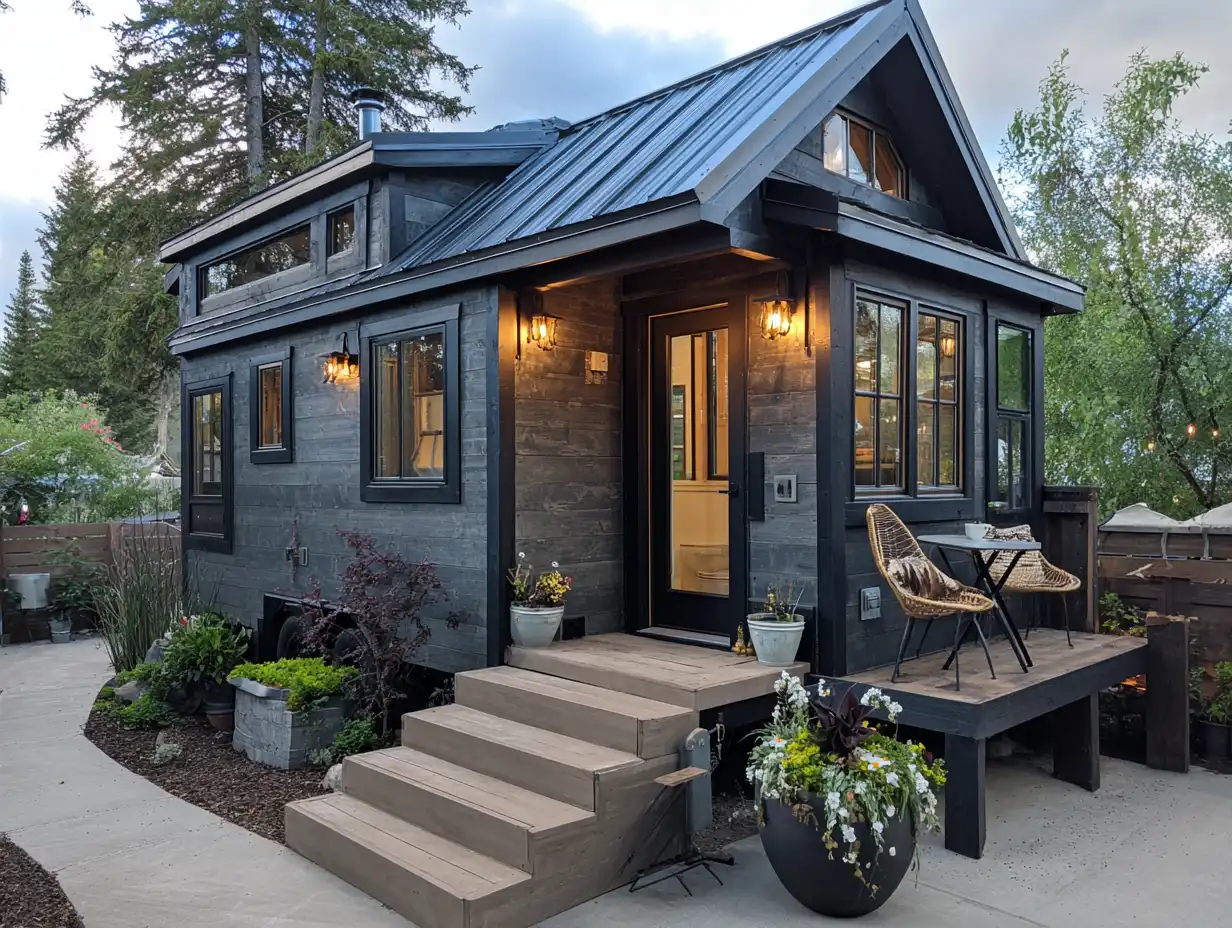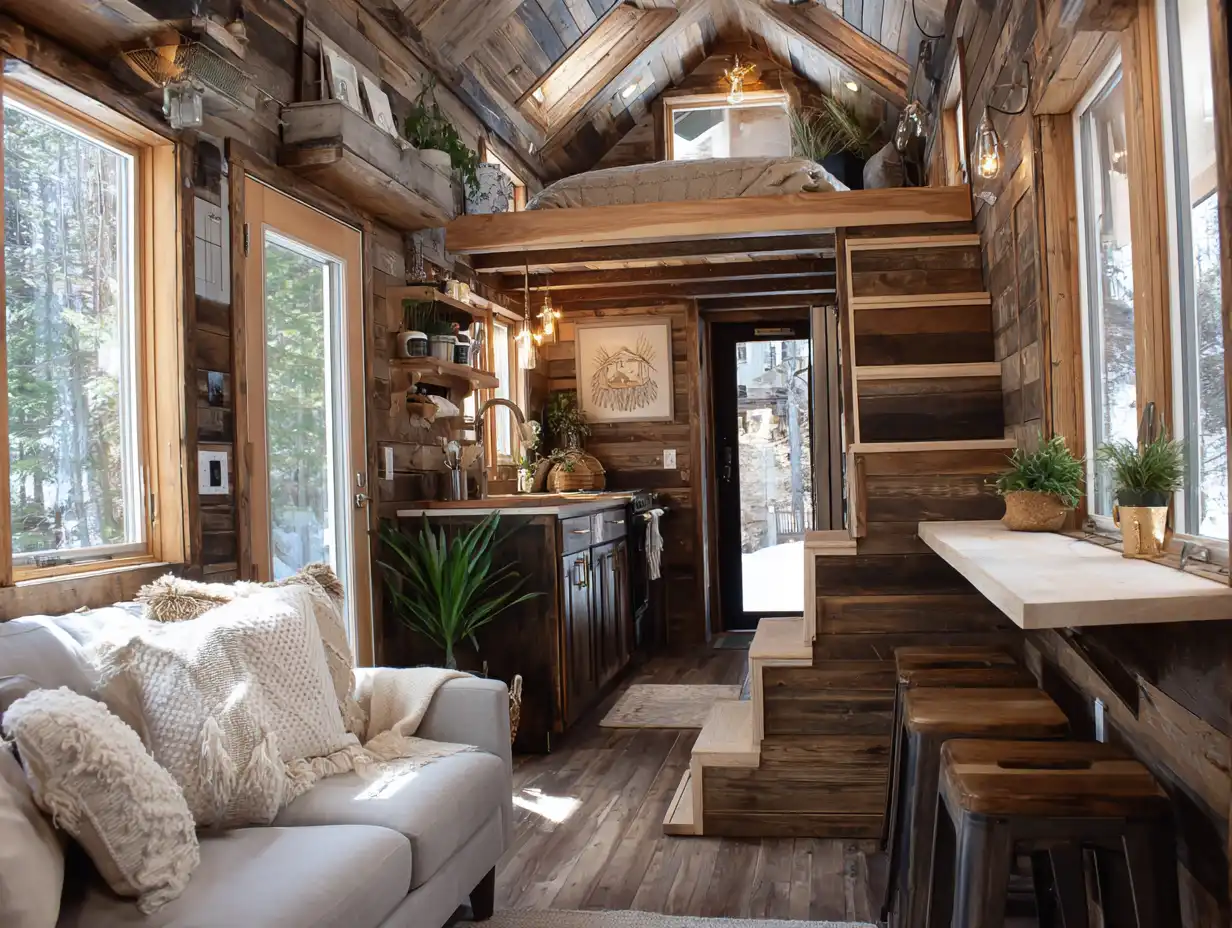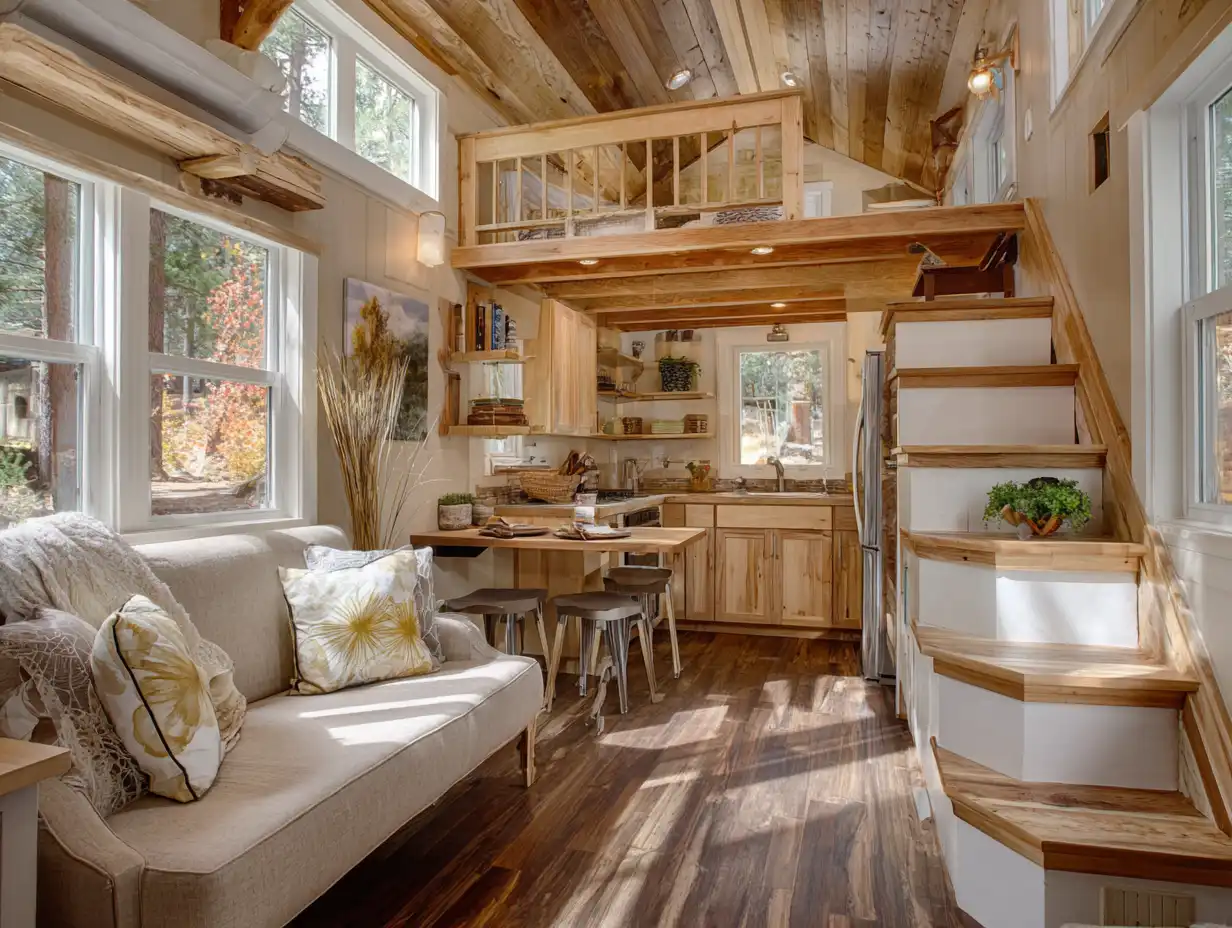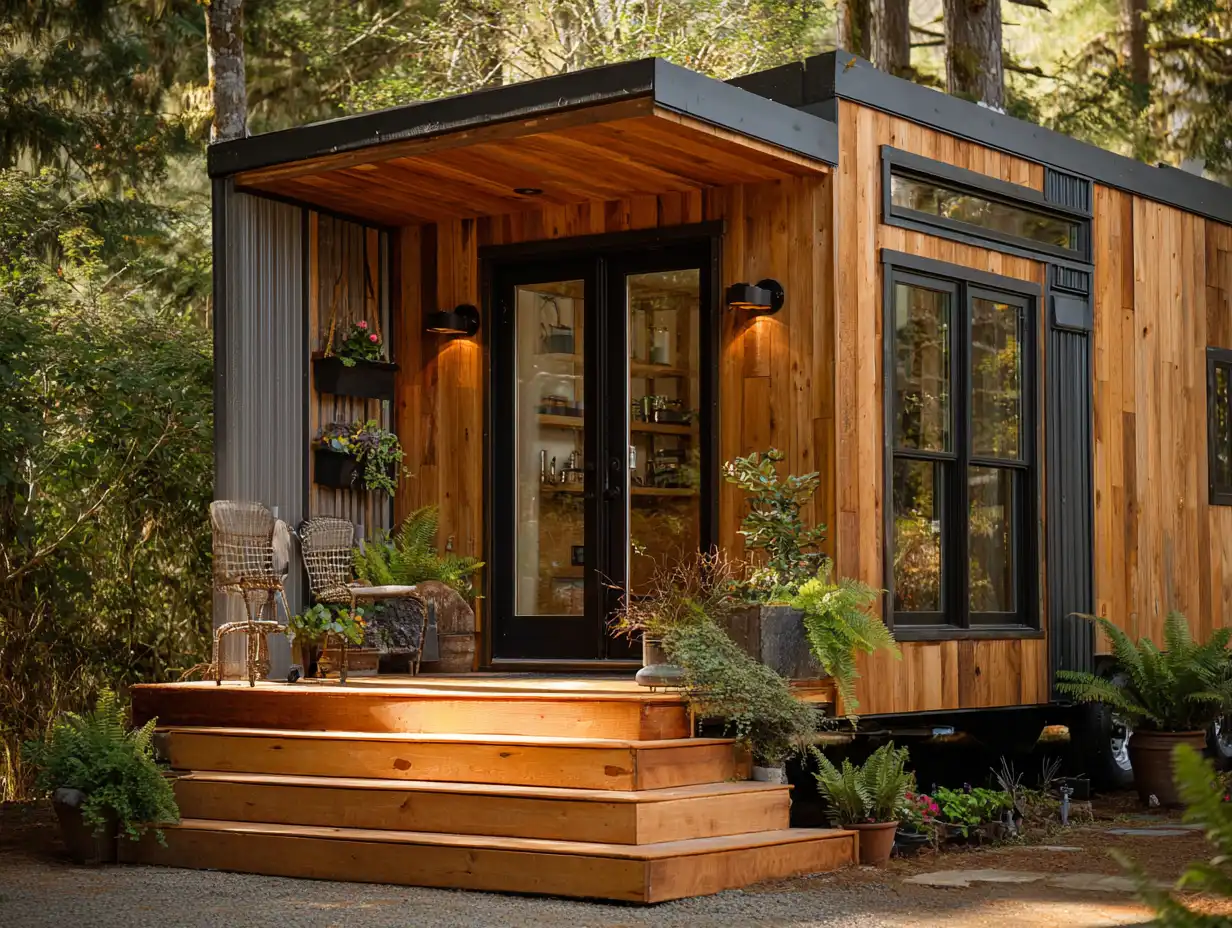As we dive into the world of tiny house living, it’s clear that maximizing space while maintaining style is key. With the right design tips, we can transform even the smallest of spaces into functional and inviting homes. Embracing minimalism doesn’t mean sacrificing comfort; it’s all about smart choices and creative solutions.
In this article, we’ll explore essential design tips that help us make the most of our tiny homes. From clever storage solutions to multi-functional furniture, these strategies not only enhance our living experience but also reflect our personal style. Whether we’re just starting our tiny house journey or looking to optimize our current space, these insights will guide us in creating a cozy haven that feels just right.

Understanding Tiny House Design
Understanding tiny house design centers around maximizing limited space while ensuring it meets our daily needs. We accomplish this by employing strategic planning and innovative approaches.

Prioritizing Functionality
We must prioritize functionality by selecting furnishings that serve multiple purposes. Examples include sofa beds, drop-leaf tables, and storage ottomans. These pieces allow us to maintain comfort and utility without overwhelming our limited square footage.
Optimizing Layout
We optimize layout by considering the flow of movement within our tiny homes. Open floor plans facilitate easy navigation. Zoning spaces for specific activities, such as cooking and relaxing, helps us create a sense of order.
Incorporating Vertical Space
Using vertical space effectively enhances our living areas. We can install wall-mounted shelves, tall cabinets, and hanging organizers. This strategy frees up floor space and adds character to our interiors.
Utilizing Natural Light
Utilizing natural light significantly impacts our tiny house environments. We can achieve this through large windows and skylights. Bright living spaces appear larger and more inviting, improving our overall experience.
Selecting a Cohesive Color Palette
Choosing a cohesive color palette ties our design elements together. Light colors like whites, soft grays, and pastels create a sense of spaciousness. We should consider accent colors for depth while ensuring harmony throughout the space.
Adding Personal Touches
Adding personal touches ensures our tiny homes reflect our unique styles. We can incorporate art, photographs, and decorative items. This personalization enhances our comfort and makes the space feel homey.
Embracing Minimalism
Embracing minimalism simplifies our living space. We strive to keep only essential items, which promotes clarity and tranquility. This approach aligns perfectly with the fundamentals of tiny house living.
By applying these tiny house design principles, we enhance our space’s functionality, aesthetics, and overall livability.
Space Optimization Techniques
We focus on innovative strategies to maximize our living spaces in tiny homes. These techniques enhance both functionality and aesthetics.

Multi-Functional Furniture
We choose multi-functional furniture to maximize utility in our tiny homes. Sofas that convert into beds, coffee tables with hidden storage, and ottomans that double as seating options create versatile spaces. When selecting furniture, prioritize pieces that serve multiple purposes, ensuring every item contributes to space efficiency. For example, a dining table can transform into a workspace, accommodating various activities without taking up extra room.
Vertical Storage Solutions
We utilize vertical storage solutions to make the most of our limited square footage. Installing shelves and cabinets that reach the ceiling keeps belongings organized and accessible. Using wall-mounted hooks for items like bikes or tools frees up floor space, creating an airy atmosphere. In addition, we can incorporate under-shelf baskets in kitchen areas to maximize storage wherever possible. Rearranging furniture to create vertical installations can add a stylish touch while enhancing functionality in our tiny homes.
Aesthetic Considerations
Aesthetic choices play a vital role in tiny house design. We can create an inviting atmosphere while maximizing the functionality of our limited space.

Choosing the Right Color Palette
Selecting a cohesive color palette influences the overall feel of our tiny home. Light colors such as whites, pastels, or soft grays enhance the sense of spaciousness. Dark colors can add depth but should be used sparingly to avoid overwhelming the environment.
- Neutral tones provide a versatile backdrop for furnishings and decor.
- Accent colors can highlight specific areas, such as a feature wall or decorative accessories.
- Monochromatic schemes simplify design while promoting harmony throughout the space.
- Color psychology influences mood; calming shades contribute to a serene atmosphere.
By thoughtfully combining colors, we can ensure our tiny house feels open and welcoming.
Incorporating Natural Light
Natural light significantly enhances the aesthetic of a tiny house. It creates an airy ambiance and makes the space feel larger.
- Large windows allow abundant daylight to enter, blurring the lines between indoors and outdoors.
- Skylights introduce light from above, increasing perceived height and openness.
- Mirrors reflect light and help expand visual space, making rooms appear more expansive.
- Lightweight window treatments can maximize sunlight while providing privacy.
We can strategically position our windows and openings to capture sunlight throughout the day, elevating the overall design and livability of our tiny home.
Sustainable Design Practices
Sustainable design practices are vital for tiny house living, emphasizing eco-friendliness and energy efficiency. By integrating these practices, we enhance not only our homes but also our environment.

Eco-Friendly Materials
Using eco-friendly materials boosts sustainability in tiny house design. We prioritize options like bamboo flooring, reclaimed wood, and recycled metal, which minimize environmental impact. Natural finishes such as low-VOC paints and non-toxic sealants contribute to healthier indoor air quality. Additionally, utilizing sheep’s wool insulation promotes thermal efficiency while being biodegradable. Incorporating these materials into our designs showcases our commitment to sustainability.
Energy Efficiency Tips
Implementing energy efficiency tips minimizes our environmental footprint and utility costs. We install energy-efficient appliances with Energy Star ratings, ensuring lower energy usage. Utilizing LED lighting reduces electricity consumption significantly, optimizing our lighting solutions. Adding proper insulation and sealing gaps prevents heat loss, promoting a comfortable living environment. Finally, installing solar panels offers renewable energy sources, further enhancing our commitment to sustainable living.
Conclusion
Tiny house design hinges on maximizing limited space while preserving comfort and aesthetics. We focus on smart design choices, using multi-functional furniture to enhance both functionality and visual appeal. Strategies like vertical storage solutions help us organize belongings efficiently, freeing floor space for easy movement.
Incorporating natural light through large windows and mirrors enriches our living experience, making the spaces appear larger and more inviting. Color palettes play a crucial role; light colors amplify spaciousness, while thoughtful color choices affect our mood positively.
Sustainable design practices remain essential, as eco-friendly materials like bamboo and reclaimed wood minimize environmental impact. We apply energy efficiency methods, such as opting for Energy Star-rated appliances and proper insulation, to reduce costs.
These design principles equip us to create cozy, personalized, and environmentally conscious tiny homes that reflect our individuality while meeting daily needs effectively.
- compact living design tips
- creative storage for tiny homes
- efficient tiny house layouts
- maximize tiny house space
- minimalist living designs
- modern tiny house ideas
- small home design tips
- small space design solutions
- space-saving tiny home designs
- stylish tiny house solutions
- sustainable tiny house design
- tiny home space optimization
- tiny house aesthetics
- tiny house decorating ideas
- Tiny House Design Tips
- tiny house floor plans
- tiny house furniture ideas
- tiny house interior design
- tiny house organization ideas
- tiny house style ideas
















Leave a comment